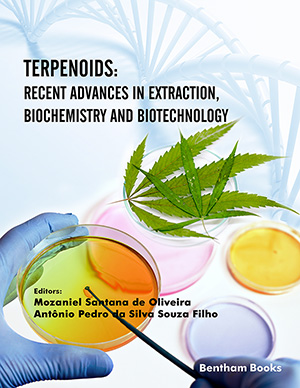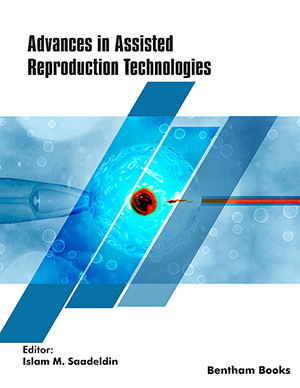
Abstract
High producing hairy root line of Linum album LYR2i was established following transformation of segments of aseptically grown seedlings with A. rhizogens LBA9402. The transformed cultures showed rapid growth and accumulation of comparatively higher content of podophyllotoxin (PT) and 6-methoxy podophyllotoxin (6-MPT). Hairy root line LYR2i was subjected to various media, carbon sources, temperatures, and photoperiodic conditions to assess their effect for optimum growth and production in shake flask. Only B5 gamborg medium was conducive for growth of hairy root line LYR2i. Sucrose was preferentially consumed by the culture for highest growth and volumetric productivity. Dark conditions supported hairy root growth and continuous light enhanced formation of PT and 6-MPT in growing hairy root line LYR2i. On the basis of above results detailed batch kinetics was established which featured 11.62 g/l of biomass with a volumetric productivity of 11.30 mg/l.d of lignan in Gamborg B5 medium supplemented with 30 g/L sucrose under 16/8 light/dark regime at 25°C ±1°C.
Keywords: Agrobacterium, hairy roots, Linum album, podophyllotoxin, transformation, carbohydrate, specific growth rate, specific productivity, volumetric productivity, growth index, doubling time, tumor, 6-methoxy podophyllotoxin, photoperiod.
Current Biotechnology
Title:High Podophyllotoxin Producing Hairy Root Line of Linum Album: Influence of Carbohydrates, Temperature and Photoperiod
Volume: 2 Issue: 2
Author(s): Sunita Farkya, Gaurav Rajouria, Vinod Kumar and Virendra S. Bisaria
Affiliation:
Keywords: Agrobacterium, hairy roots, Linum album, podophyllotoxin, transformation, carbohydrate, specific growth rate, specific productivity, volumetric productivity, growth index, doubling time, tumor, 6-methoxy podophyllotoxin, photoperiod.
Abstract: High producing hairy root line of Linum album LYR2i was established following transformation of segments of aseptically grown seedlings with A. rhizogens LBA9402. The transformed cultures showed rapid growth and accumulation of comparatively higher content of podophyllotoxin (PT) and 6-methoxy podophyllotoxin (6-MPT). Hairy root line LYR2i was subjected to various media, carbon sources, temperatures, and photoperiodic conditions to assess their effect for optimum growth and production in shake flask. Only B5 gamborg medium was conducive for growth of hairy root line LYR2i. Sucrose was preferentially consumed by the culture for highest growth and volumetric productivity. Dark conditions supported hairy root growth and continuous light enhanced formation of PT and 6-MPT in growing hairy root line LYR2i. On the basis of above results detailed batch kinetics was established which featured 11.62 g/l of biomass with a volumetric productivity of 11.30 mg/l.d of lignan in Gamborg B5 medium supplemented with 30 g/L sucrose under 16/8 light/dark regime at 25°C ±1°C.
Export Options
About this article
Cite this article as:
Farkya Sunita, Rajouria Gaurav, Kumar Vinod and Bisaria S. Virendra, High Podophyllotoxin Producing Hairy Root Line of Linum Album: Influence of Carbohydrates, Temperature and Photoperiod, Current Biotechnology 2013; 2 (2) . https://dx.doi.org/10.2174/22103031113039990008
| DOI https://dx.doi.org/10.2174/22103031113039990008 |
Print ISSN 2211-5501 |
| Publisher Name Bentham Science Publisher |
Online ISSN 2211-551X |
Call for Papers in Thematic Issues
Age Reversal using transient epigenetc reprogramming with the OSK Yamanaka Factors
Aging is a complex biological process characterized by a gradual deterioration of physiological functions and an increased vulnerability to disease. Recent advancements in the field of regenerative medicine have shown promising avenues for combating aging. Among these, partial epigenetic reprogramming, specifically utilizing the Yamanaka factors, has been shown to reverse ...read more
Bioinformatic Analysis of Regulated Cell Death in Chronic and Acute Inflammatory Diseases
In the intricate realm of inflammatory diseases, delving into the complexities surrounding regulated cell death emerges as an indispensable and forefront area of exploration. Understanding the intricacies of how cells are regulated to undergo death in inflammatory conditions not only represents a pivotal frontier in biomedical research but also holds ...read more
Feeding a vegan World
The Eat-Lancet Planetary diet recommends at least 2/3 plant and microbial sources in the food protein portion. Such diet is recommended against obesity, cancer and to limit global warming, and might get more and more incentives in the next years. We thus need massive amounts of Plant-based food, and the ...read more
Leveraging AI for personalized pediatric neurodevelopmental support
Personalized medicine in pediatrics is a moving target dedicated to finding the right treatment, at the right time, for each individual child in each stage of development. Child development is a highly personal process, unique to each individual, something which is even more apparent in the development of children with ...read more
Related Journals
 4
4
- Author Guidelines
- Graphical Abstracts
- Fabricating and Stating False Information
- Research Misconduct
- Post Publication Discussions and Corrections
- Publishing Ethics and Rectitude
- Increase Visibility of Your Article
- Archiving Policies
- Peer Review Workflow
- Order Your Article Before Print
- Promote Your Article
- Manuscript Transfer Facility
- Editorial Policies
- Allegations from Whistleblowers
- Announcements
Related Articles
-
Recent Progress of Benzimidazole Hybrids for Anticancer Potential
Current Medicinal Chemistry Mechanism-based Pharmacological Management of Chemotherapy-induced Neuropathic Pain from Preclinical Studies to Clinical Prospective: Platinum-based Drugs, Taxanes, and Vinca Alkaloids
Current Pharmaceutical Design Innovative Drug Delivery Systems for the Administration of Natural Compounds
Current Bioactive Compounds Regenerative Medicine: Does Erythropoietin have a Role?
Current Pharmaceutical Design Effect of Environmental Contaminants on Mammalian Testis
Current Molecular Pharmacology The Sojourn from Parenteral to Oral Taxanes using Nanocarrier Systems: A Patent Review
Recent Patents on Drug Delivery & Formulation Multicolor-FISH Approaches for the Characterization of Human Chromosomes in Clinical Genetics and Tumor Cytogenetics
Current Genomics Recent Developments of Platinum-based Anticancer Drugs- Detection and Analysis in Biological Samples
Current Organic Chemistry Biosynthesis of Peptide Hormones Derived from Precursor Sequences
Current Medicinal Chemistry A Review of Therapeutic Effects of Curcumin
Current Pharmaceutical Design Cisplatin Properties in a Nanobiotechnological Approach to Cancer: A Mini-Review
Current Cancer Drug Targets Progresses in TCM Metal-Based Antitumour Agents
Anti-Cancer Agents in Medicinal Chemistry 1950 MHz Electromagnetic Fields Ameliorate Aβ Pathology in Alzheimer’s Disease Mice
Current Alzheimer Research Potential Therapeutic Targets of Curcumin, Most Abundant Active Compound of Turmeric Spice: Role in the Management of Various Types of Cancer
Recent Patents on Anti-Cancer Drug Discovery Fluoroquinolones Prophylaxis of Bacterial Infections in Neutropenic Patients: Time to Re-Evaluate
Current Cancer Therapy Reviews Antimicrobial, In Vitro and In Vivo Antineoplastic Activities, Mechanism of Action, Structural and Thermal Properties of a Small-Novel Pharmaceutical Organometallic Chelate
Mini-Reviews in Medicinal Chemistry Vasopressin in Health and Disease with a Focus on Affective Disorders
Central Nervous System Agents in Medicinal Chemistry Epigenetic Effects of Cadmium in Cancer: Focus on Melanoma
Current Genomics Involvement of Membrane Channels in Autoimmune Disorders
Current Pharmaceutical Design In Silico Studies Revealed Multiple Neurological Targets for the Antidepressant Molecule Ursolic Acid
Current Neuropharmacology





















